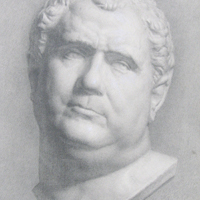For hundreds of years visual and decorative art was produced through Atelier studios and workshops. Under the …
$39.00
Course Access
Unlimited Duration
Total Video Time
3 hours, 33 minutes
For hundreds of years visual and decorative art was produced through Atelier studios and workshops. Under the supervision of a master, these studios educated students and apprentices in art history and methods of producing representational art. In this tutorial William Rodgers will introduce some of these basic methods to beginning artists. Information will be provided on materials and methods using a sculpture cast as the main subject. Comparative measurement techniques will be demonstrated to help train students in developing observational skills to produce accurate drawings. The purpose of these lessons will be to place importance on establishing the block-in stage of a drawing, and not on completing a drawing.
William Rodgers’ path to a fulfillment in art took a circuitous route. Despite a deep interest in art and museums from an early age, he found himself pursuing a business degree at the university level. At the same time he was painting for himself and as a way to afford gifts for family and friends. Rodgers’ degree aspirations changed, which resulted in degrees in Art and Art History, a Masters Degree from the New York Academy of Art and six years post-graduate study in some of the world’s top studios, including locations in Florence and Rome.
Rodgers opened The Pacific Atelier in Makawao, Hawaii, a traditional atelier in which the students studied the fundamentals of drawing, painting and sculpture.
Rodgers currently resides and teaches in California.
William Rodgers
About Instructor
William Rodgers’ path to a fulfillment in art took a circuitous route. Despite a deep interest in art and museums from an early age, he found himself pursuing a business degree at the University level. At the same time he was painting for himself and as a way to afford gifts for family and friends. Rodgers’ degree aspirations changed which resulted in degrees in Art and Art History, a Masters Degree from the New York Academy of Art and six years post-graduate study in some of the world’s top studios, including locations in Florence and Rome.
Course Curriculum
-
- Introduction To The Basics Of Classical Atelier Drawing | Preview FREE 00:05:00
- Preview for Introduction To The Basics Of Classical Atelier Drawing with William Rodgers.
-
- Materials: Drawing Tools 00:08:00
- Different types of drawing materials will be introduced with brief descriptions of the intended use. A brief explanation will be given on the materials used in the lesson.
- Materials: Paper 00:03:00
- Various types of drawing paper will be presented before selecting the paper used for the tutorial.
- Set-Up: Workspace 00:17:00
- This section will demonstrate how to set up a drawing workspace in a studio with a subject. The visual field will be kept as simple as possible to help the focus of the drawing.
- Set-Up: Sharpening the Graphite 00:08:00
- The method for sharpening graphite with a razor blade will be demonstrated. Sandpaper will also be used to sharpen graphite.
- Set-Up: The Cast 00:04:00
- The cast will be set-up with a discussion of the different options available when setting-up a cast or subject.
- Set-Up: Visual Pollution 00:06:00
- This section will demonstrate what to avoid when setting up a drawing workspace.
- Set-Up: Measurement 00:02:00
- The tools used to make measurements and check angles and tilts will be introduced.
- Set-Up: Constructing A Viewfinder (Optional) 00:05:00
- A viewfinder is a great tool that helps focus on small individual features within a composition. This section will demonstrate how to build a viewfinder.
- Set-Up: Position Marking 00:03:00
- The positioning of the drawing workspace will be marked with tape. Marking the workspace will minimize the set-up time for a session when working on a project for an extended amount of time.
- Methods & Exercises: Cast Drawing Process FREE 00:08:00
- Some time will be spent discussing why graphite is the preferred material for these exercises. William will also discuss the purpose of the cast drawing process.
- Methods & Exercises: Concepts Of Simplification 00:13:00
- William will discuss a few concepts of simplifying the drawing process. "Pulling the string" and the "draw-through" will be demonstrated to help students develop their observational skills.
- Methods & Exercises: Cutout Paper Exercise 00:23:00
- A cutout paper exercise will be demonstrated to help students accurately draw the shapes they observe. The exercise will also be applied to the cast drawing.
- Methods & Exercises: Draw-Through Method 00:21:00
- A new drawing will be used to demonstrate an organic draw-through method. The techniques discussed will be applied and adjustments will be made continuously.
- Methods & Exercises: Fine Adjustments 00:26:00
- William's "Push me pull you" method of making adjustments will be demonstrated. Drawing large to small shapes, and separating the dark shadow shapes from light shapes will be demonstrated.



